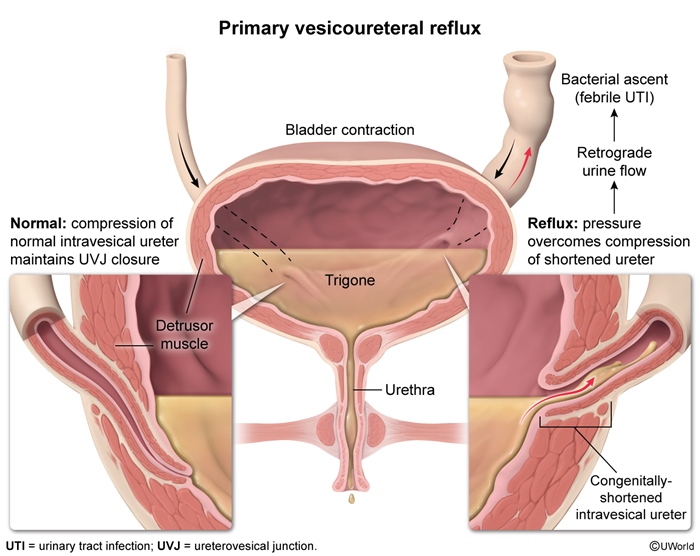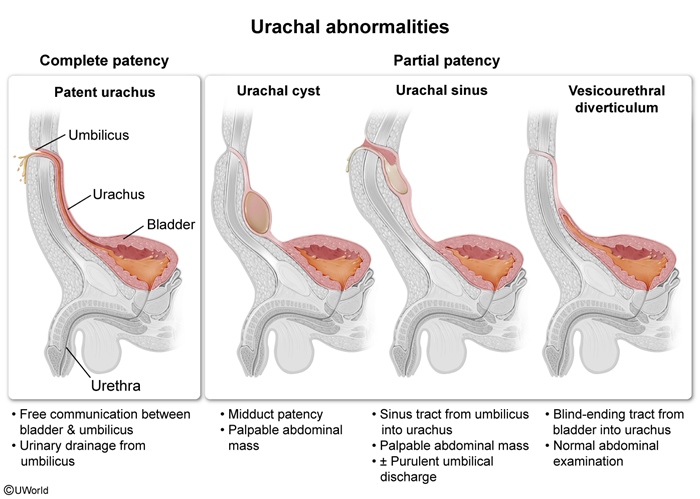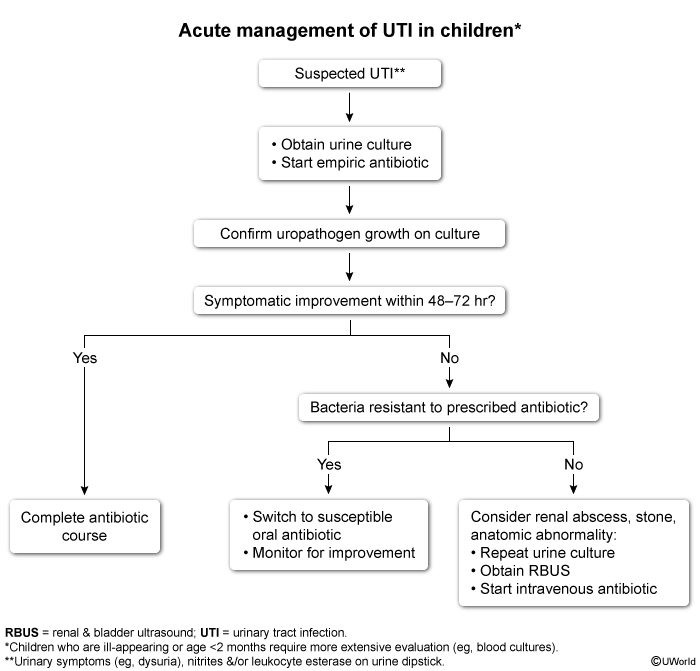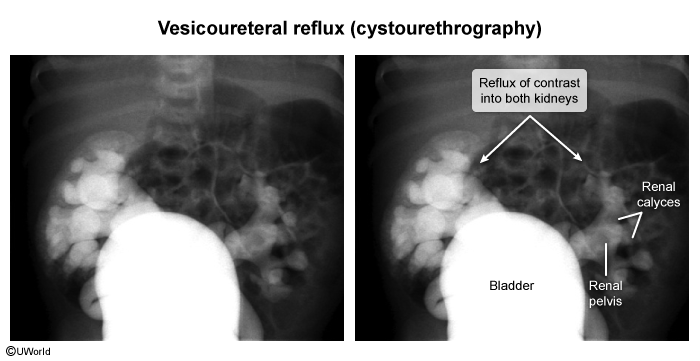Pediatric Urinary Tract Infections
Article Sections
Introduction
Urinary tract infections (UTIs) are typically due to ascending enteric bacteria, and risk factors in children include functional and anatomic abnormalities, such as vesicoureteral reflux (VUR). Young children (age <2) often present with nonspecific findings (eg, fever, irritability), and prompt treatment prevents long-term complications such as renal scarring and chronic kidney disease.
Pathogenesis
A UTI is typically acquired when enteric bacteria are introduced to the periurethral area and ascend the urethra to the bladder. Escherichia coli is the most common etiology, followed by other gram-negative bacteria (eg, Klebsiella, Proteus). Virulence factors facilitate infection, such as P fimbriae on E coli, which promote adhesion to the uroepithelium.
Bacterial attachment triggers an inflammatory response, resulting in the classic findings of dysuria, urgency, and frequency when localized to the lower urinary tract (ie, cystitis) and flank pain and costovertebral angle tenderness when spread to the upper urinary tract (ie, pyelonephritis).
Continue Learning with UWorld
Get the full Pediatric Urinary Tract Infections article plus rich visuals, real-world cases, and in-depth insights from medical experts, all available through the UWorld Medical Library.
Figures




Images
